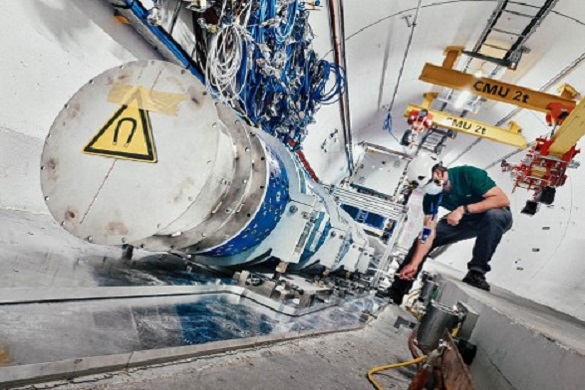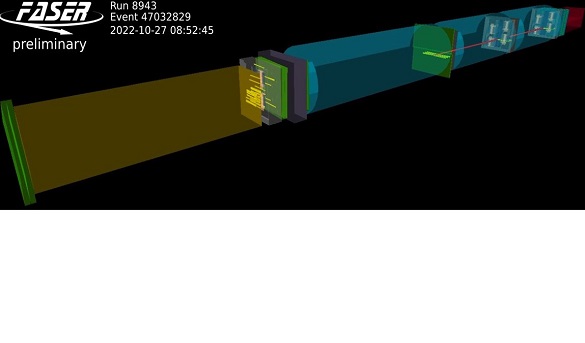
Figure 1. The FASER detector, located deep underground at CERN’s Large Hadron Collider
The Forward Search Experiment, FASER, at CERN, which involves University of Liverpool particle physicists, has just announced its first ever results.
FASER is a brand new experiment at CERN designed to search for light and weakly-interacting new physics particles and detect subatomic neutrinos produced at the Large Hadron Collider (LHC).
Unlike other detectors at CERN, such as ATLAS which is several stories tall and weighs thousands of tonnes, FASER is only about one tonne and fits neatly into a small side-tunnel at CERN. It took only a few years to design and construct, using spare parts from other experiments; it was installed in a previously unused tunnel in March 2021, and started taking data in July 2022.
Just a few months later, the international collaboration, which includes over 80 researchers from the University of Liverpool and 21 other partner institutions, announced its first results on Sunday 19th of March at the 57th Rencontres de Moriond Electroweak and Unified Theories conference in Italy.
The highlight is the first-time detection of high energy neutrinos created by a particle collider. The discovery promises to deepen scientists’ understanding of the nature of neutrinos, first spotted in 1956, which are the most abundant particle in the cosmos and a key participant in the process that makes stars burn.
Dr Carl Gwilliam, Physics Coordinator of the FASER Collaboration and particle physicist with the University’s Department of Physics, said: “Neutrinos have long been produced when smashing together two high-energy particle beams in particle colliders but we are the first to observe them, opening a new source for their study. The neutrinos detected by FASER are the highest ever energy man-made neutrinos, significantly more energetic than the majority of neutrinos studied by physicists thus far and similar to those produced when rays of particles from deep space shower in our atmosphere.”
The work could also shed light on cosmic neutrinos that travel large distances and collide with the Earth, providing a window on distant parts of the cosmos.
Professor Monica D’Onofrio, Head of Research at the University’s Department of Physics and Team Leader of the Liverpool FASER group, said: “Neutrinos, which have been known about for several decades, were a key building block in the successful Standard Model of particle physics. Their detection for the first time at a particle collider is an important milestone, since such high-energy neutrinos provide a complimentary ingredient in understanding exciting particle astrophysics observations, potentially telling us things about space that we can’t learn in other ways.”
Beyond neutrinos, one of FASER’s other main objectives is to help identify the particles that make up dark matter, which physicists think comprises the vast majority of matter in the universe, but which have never directly been observed before. The first data analysed by the FASER Collaboration have yet to show signs of dark matter, but have already helped us constraining further new-physics models.
Professor D’Onofrio added: “Even a null result is exciting at this stage, because we know now that FASER has great potential to reach new physics models that have never been explored before, and that is fantastic.”
With the LHC set to begin a new round of particle collisions in a few months, the detector stands ready to record them, should they appear. Dr Gwilliam said: “We’re hoping to see some exciting signals and if anything appears, we will be ready for it!”
You can read CERN’s news release about FASER’s results here.
Figure 2 (below): A candidate neutrino event in the FASER detector: the neutrino enters from the left, passing through the veto scintillator (green) unobserved. It then interacts in the FASERν detector (yellow) producing significant activity in the first racking station (purple). The red line indicates a single track, corresponding to a high-momentum muon from the interaction, passing through the spectrometer.
